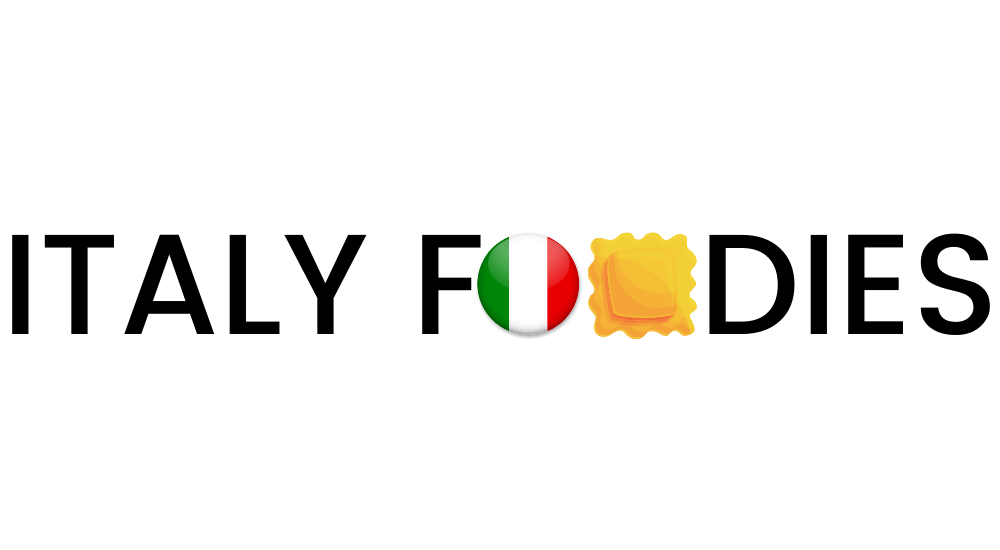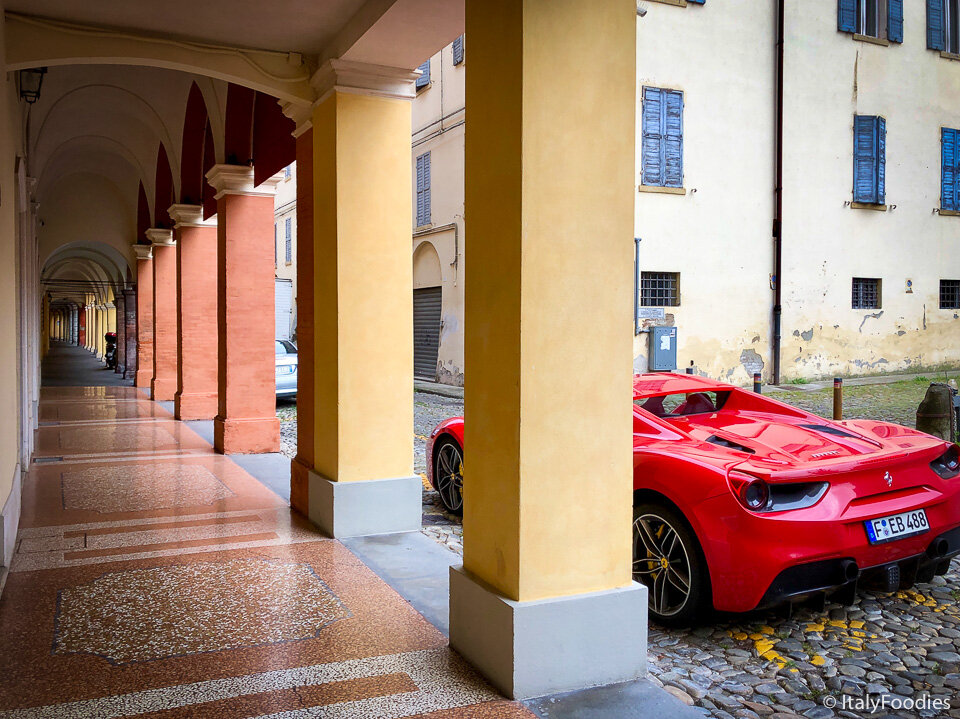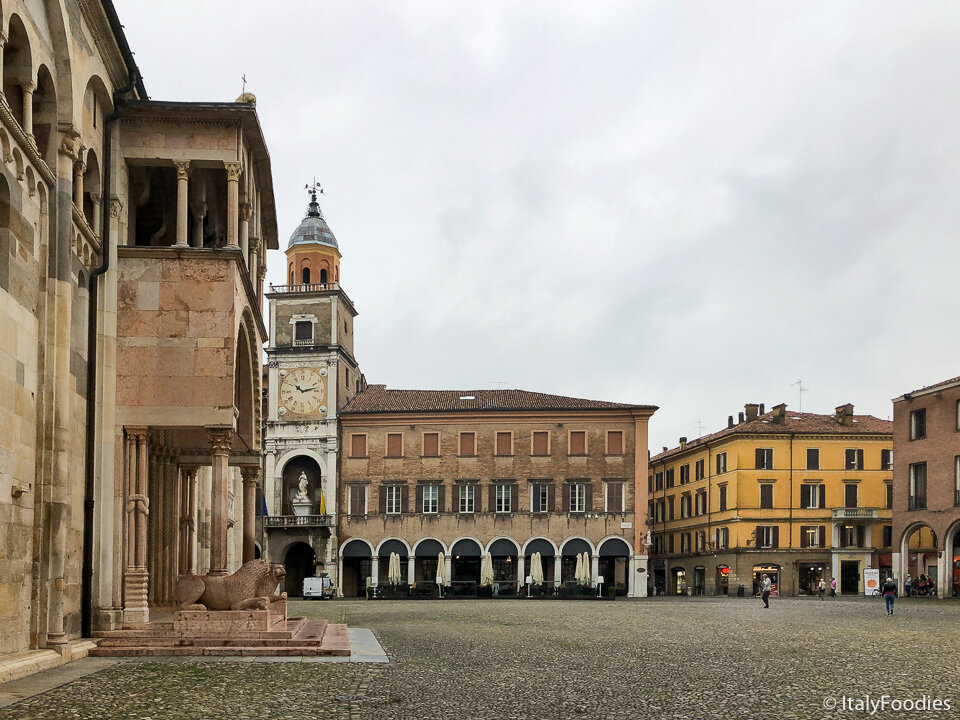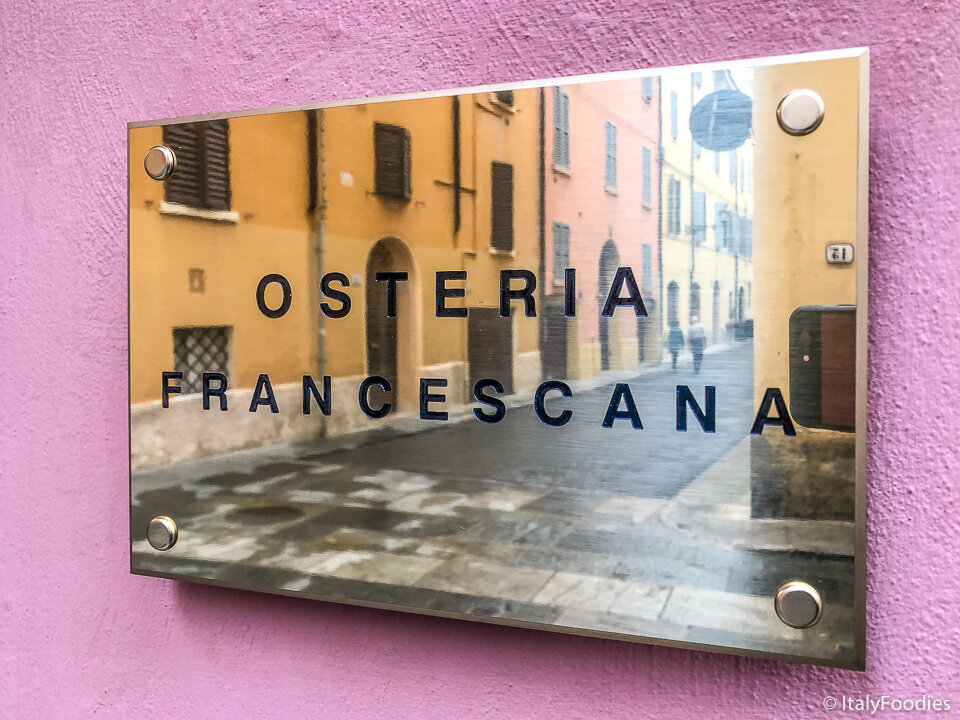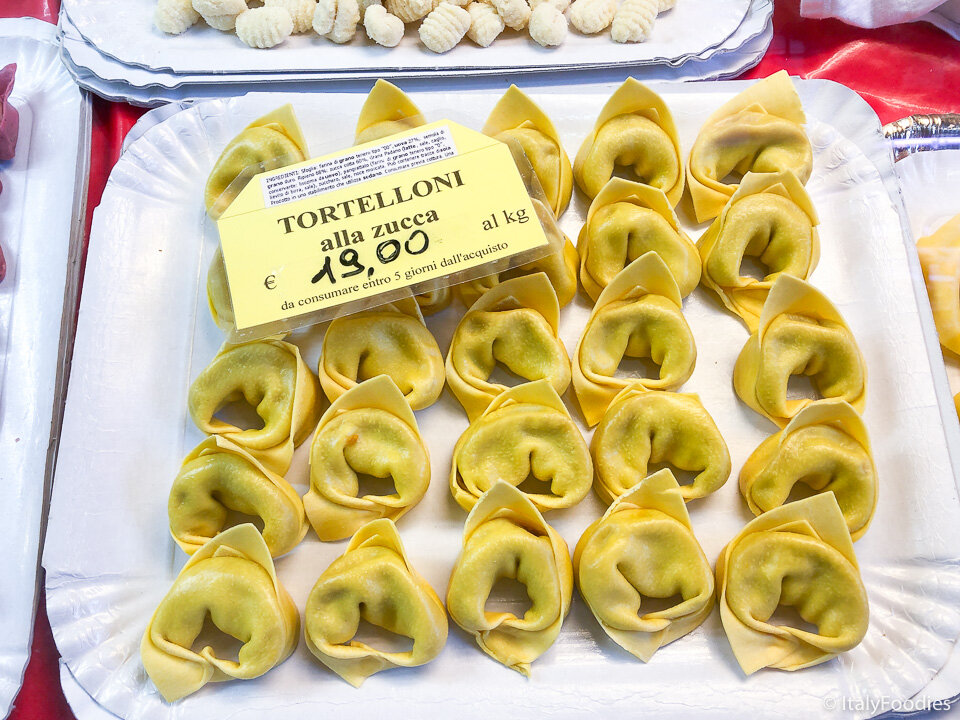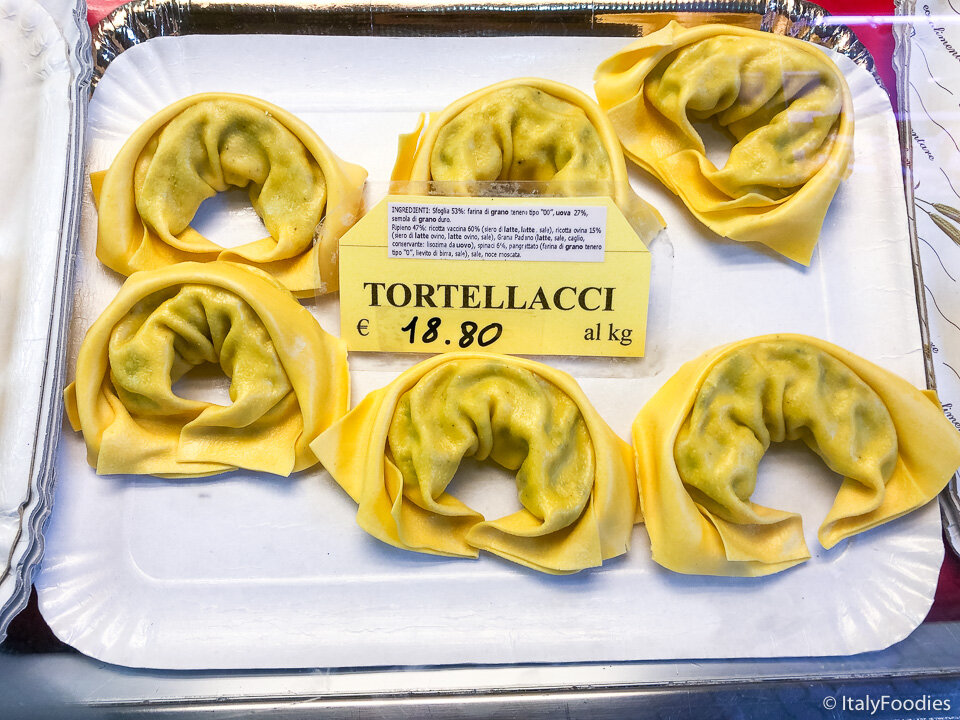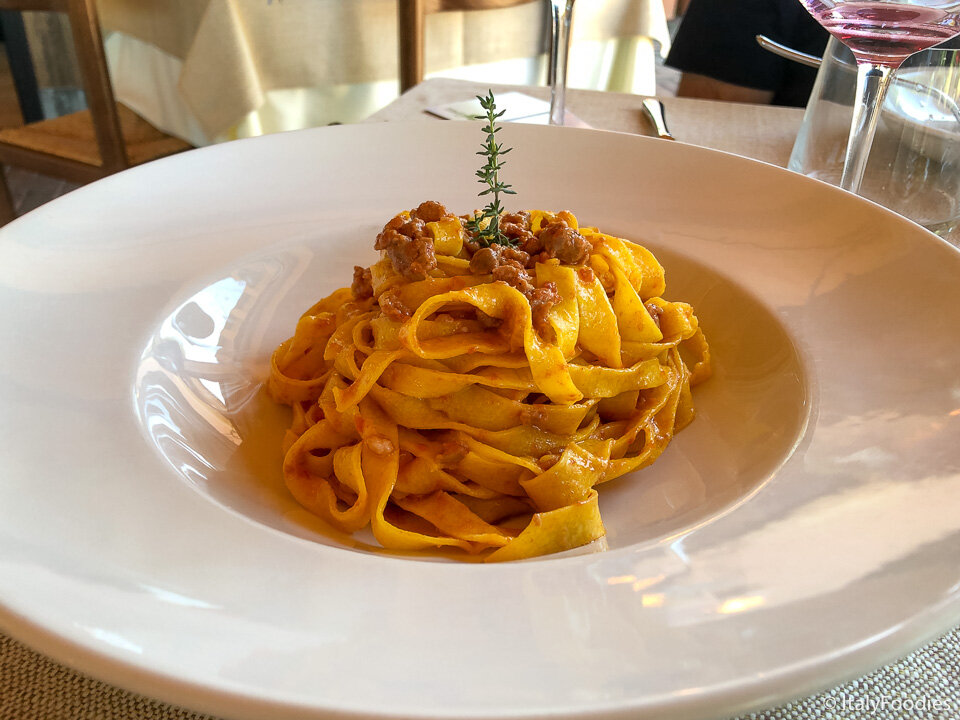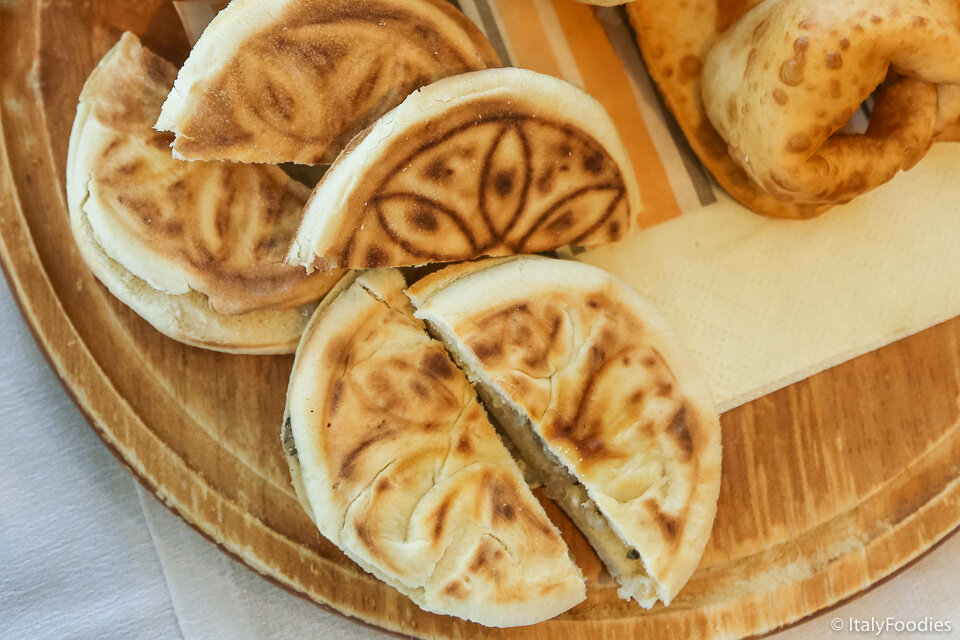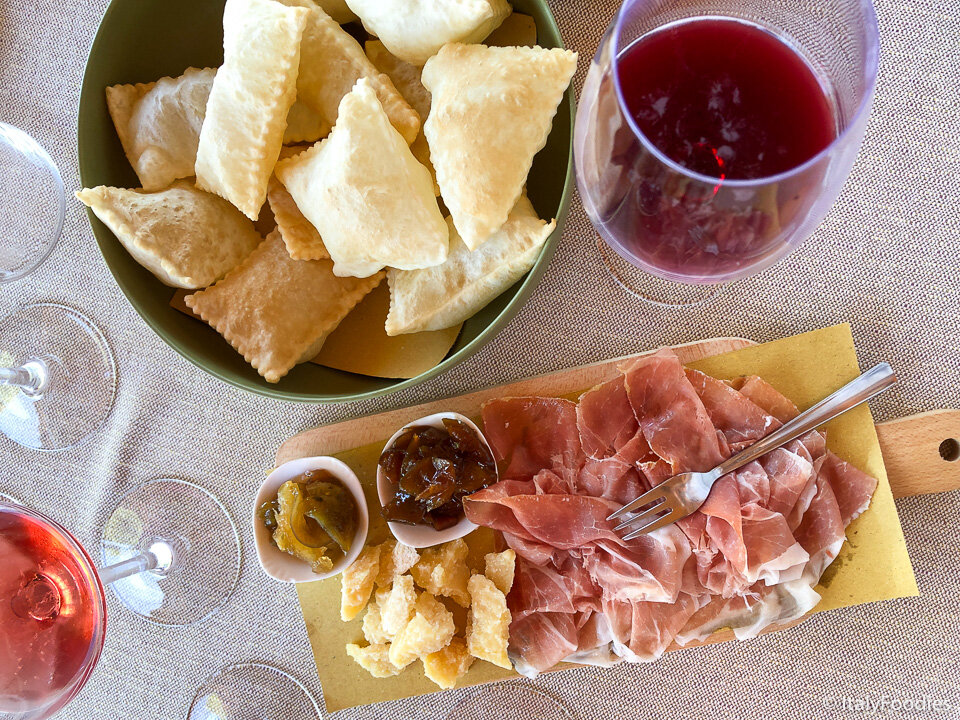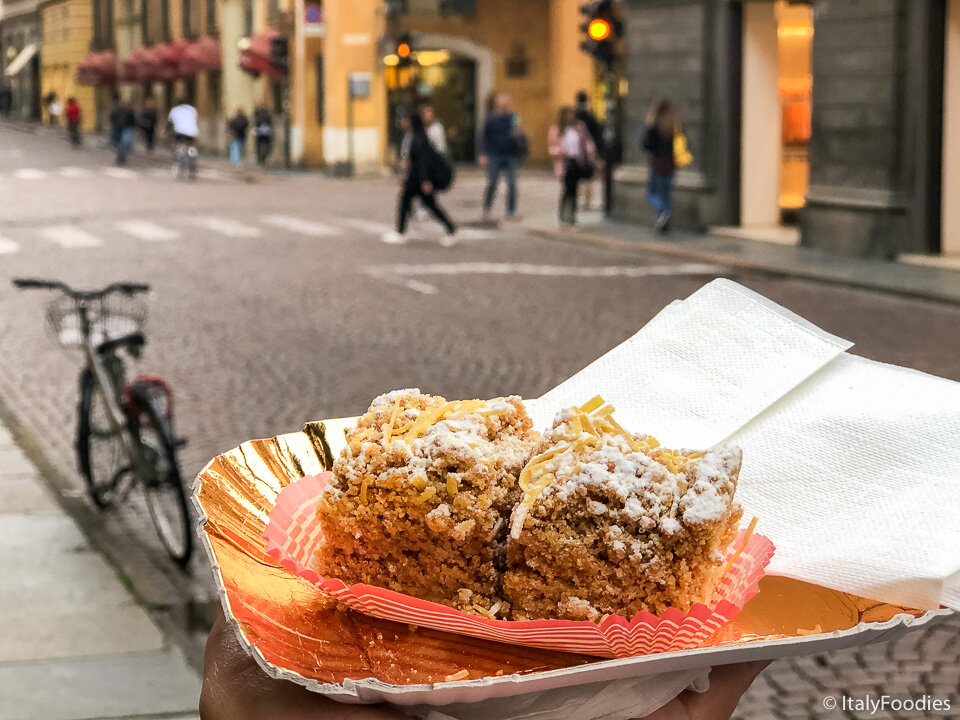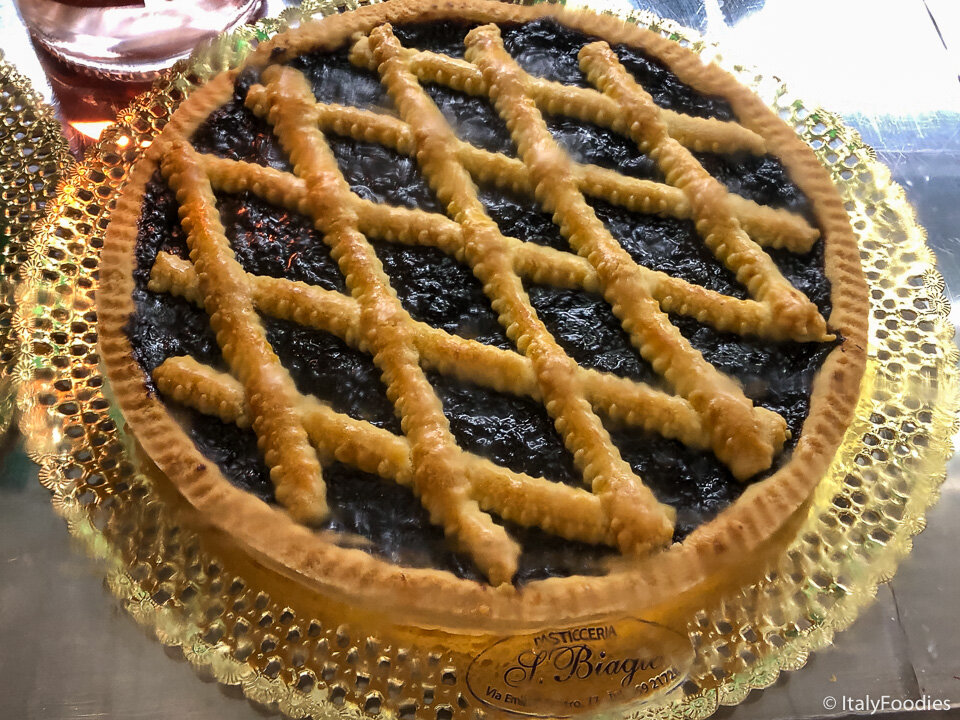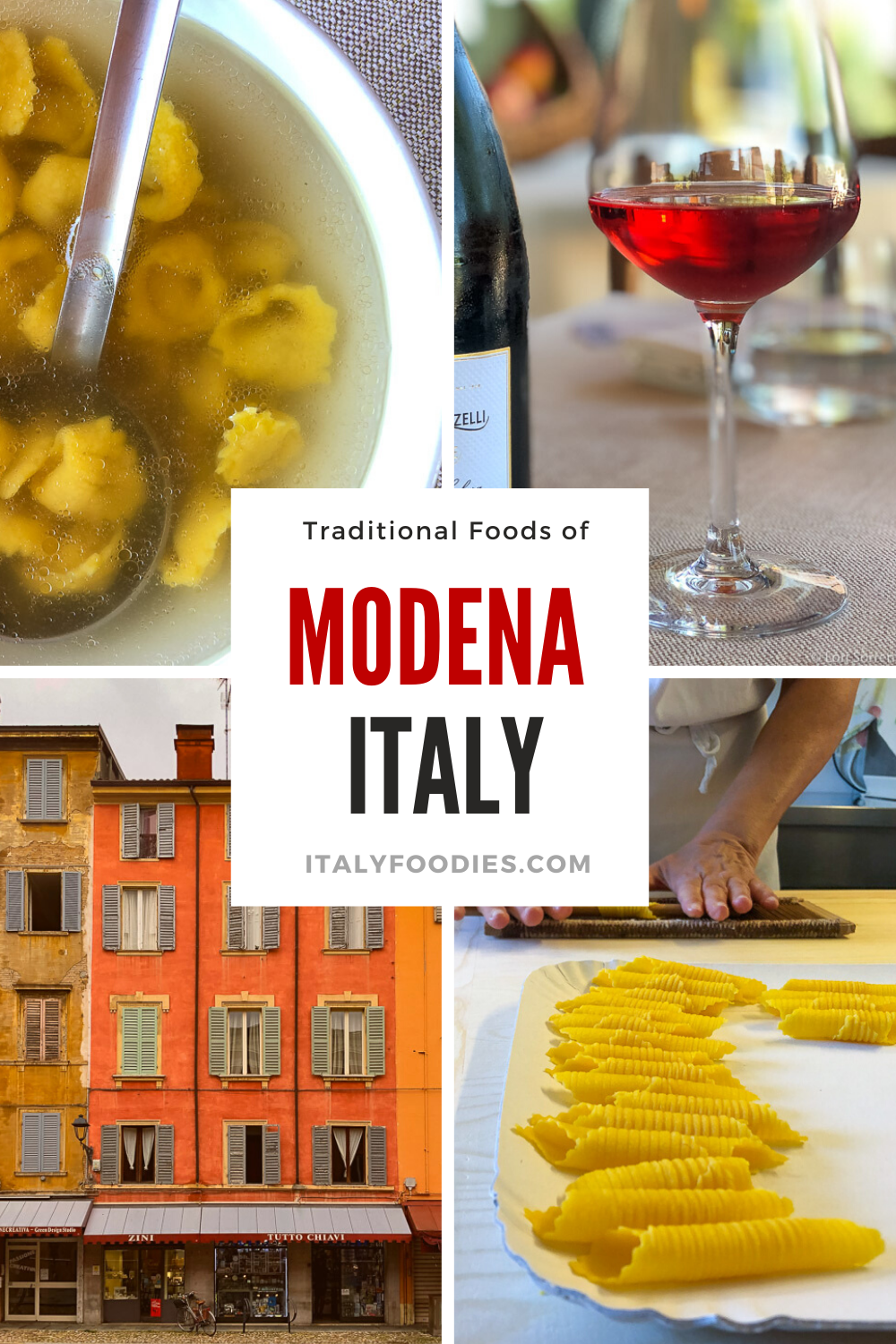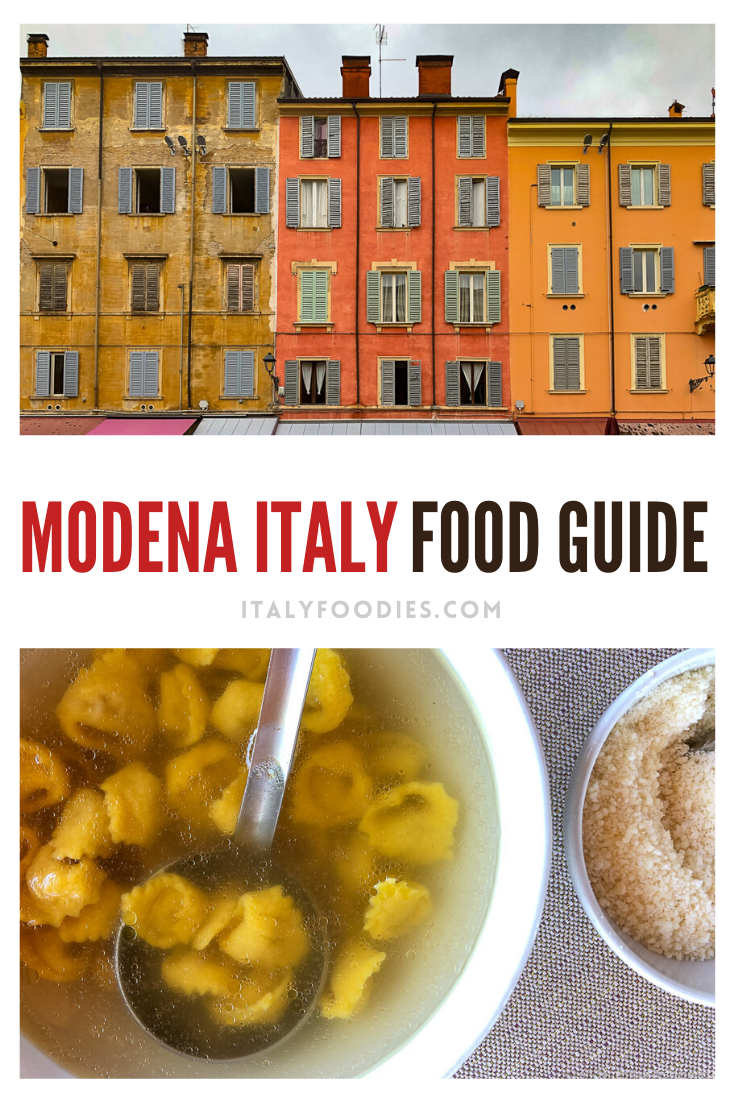Modena Food Guide: What to Eat in Modena, Emilia Romagna's Food City
Want to delve deeper into the food in Modena, Emilia Romagna’s gastronomic city? Here’s what to eat in Modena and where to savor it all!
It’s no surprise we love the traditional foods in Italy! Frankly, it’s what we dream of and cook at home, and travel to Italy for! And we’re not the only ones dreaming. Italian food is the most popular food in the world.
So if you want to eat and drink Italy, you’ve come to the right place. And if Italy is the world’s gastronomic earthquake zone for food, the region of Emilia Romagna is surely the epicenter.
Food in places like Bologna, Modena, Parma, Savigno and other cities in Emilia Romagna is legendary. Here, the rich and often fatty foods pair well together with frizzante wines like Pignoletto and Lambrusco, or their signature Italian liqueur, Nocino.
Modena food in particular is renowned as the producer of three of Italy’s most significant heritage foods — parmigiano reggiano cheese, traditional balsamic vinegar, and prosciutto ham.
Italians are passionate about their food. When they’re not eating food, they’re talking about food, and even talking about food while they’re eating.
There really is something to the notion of food as love. In Italy, food is so strongly associated with hospitality, and the desire Italians have to share their culture and heritage with others.
We always say Italian food is highly regional with unique specialties that distinguish each region from their neighbors, and one city with a huge culinary heart is Modena, one of Italy’s best cities for food.
One of the most iconic of Modena foods
What’s in this Article?
The Modena Food Scene
Food in Modena
Heritage Foods of Modena
What to Eat in Modena
What to Drink in Modena, Italy
The Modena Food Scene
The city of Modena is just an hour up the road and an easy day trip from Bologna. Modena is a fairly big city — not nearly the size of Bologna, but a true heavyweight when it comes to producing immense talent.
Modena is the birthplace of the legendary sports car magnate Enzo Ferrari and the greatest Opera tenor of our time, Luciano Pavarotti, who lived most of his life here before passing away in his home in Modena.
Today Ferrari, Lamborghini, Maserati, Ducati, and Pagani all have headquarters in the Motor Valley.
As for the city’s culinary scene? It is renowned throughout the world thanks to several powerhouse masters perfecting their craft. Most notably, Modena chef Massimo Bottura who heads Osteria Francescana, one of the best restaurants in Modena and the world.
It’s consistently ranked at the top of the World’s Best Restaurants.
When it comes to the food in Italy, the north-central region of Emilia Romagna has arguably become the culinary capital of Italy in the past decade with Bologna at the center of activity.
The food scene there is truly amazing.
We’ve savored the food in Bologna so many different ways, from dedicated food tours, shopping the daily markets, food festivals, wine tours, self-guided quests for the best street food, and elegant dining in Michelin star restaurants.
But the more we taste and explore all the areas of Emilia Romagna, the more we also see the nuanced differences in food among the other towns in the region.
Food in Modena
So, what about the food in Modena?
Modena food is typical of what you’ll find in other parts of Emilia Romagna, but there are some subtleties that are unique to Modena alone.
Ways of eating a certain food and local food preparations make Modena a true stand-out when it comes to regional Italian food.
There’s no denying the trinity of heritage food that was born here: Traditional Balsamico di Modena, Prosciutto ham, and Parmigiano Reggiano, the undisputed King of Cheese. Can’t you just hear Michael Buffer now?
“In this corner, from Modena Italy weighing in at a whopping 84 pounds…. lllll-let’s get ready to rum-ble!!”
Boxing humor aside, it’s not far from the truth. The food in Modena is truly epic.
They say food is only as good as the ingredients that go into the dish — maybe that’s why Chef Bottura continues to top the list of the World’s Best Chefs.
If you’re wondering what iconic foods you should try when you’re in Modena, we’ve got you covered.
“There’s no denying the Holy Trinity of Italian heritage food was born here in Modena!”
Heritage Foods of Modena
Balsamico di Modena
The consortium that regulates Balsamic vinegar of Modena sets the standards in the region.
There are two DOP versions of Modena balsamic: Aceto Balsamico Tradizionale di Modena Affinato (or aged) must be aged a minimum of 12 years, and Aceto Balsamico Tradizionale di Modena Extra Vecchio (or extra old) must be aged a minimum of 25 years.
So much goes into making traditional balsamic vinegar, this most traditional of Modenese foods, but all it really needs is time.
Stop into La Consorteria on a Modena food tour to try the flavors of a variety of agings from different producers!
>>> Not Just for Salads: <<<
Drizzle traditional balsamic vinegar on bread, in pasta sauce, over cheese and vanilla gelato or ice cream!
Parmigiano Reggiano
As with balsamic, a consortium operating under strict DOP regulations oversees the production of parmigiano reggiano right down to the feed given to the cows that produce the milk for the cheese.
It’s a lengthy production process after which the wheels of cheese must be aged for a minimum of 12 months, but the very best are aged much longer giving the cheese a richer flavor.
Once you’ve tasted true DOP parmigiano reggiano, the King of Cheeses, you won’t settle for anything less.
Prosciutto
Strict DOP guidelines apply to the raising of the pigs ensuring the right texture and fat content. All hams must come from only Italian pigs that have been raised under strict DOP regulations. The lengthy production process takes 14 months, 11 of which are for aging alone.
The aged hams are inspected after 14 months using the tibia bone of a horse to stick each ham three times to check for spoilage. Only after a ham passes the final inspection can it be labeled as Proscuitto di Modena DOP.
Culatello
If you think Prosciutto is the most prized ham in the region, try Culatello, known as the “little ass of Parma”! Culatello is to the T-bone steak what Prosiutto is to the steak — the choicest part of the ham. It just may change the way you feel about that other one!
What to Eat in Modena
Go ahead and add these foods to your Italy bucket list. Here’s what to eat in Modena, Italy and the most famous foods Modena is known for!
1. Pasta!
Tortellino
This delicious “navel” of pasta filled with meat (pork, cured ham, sausage, and sometimes mortadella aka Bologna sausage) is one of the traditional pastas of Emilia Romagna, and each family holds its own secret recipe! They are typically eaten in a broth with a spoon but you’ll find them prepared in other Italian pasta dishes as well.
Small - Tortellini, typically served in brodo (chicken broth), and sometimes da passeggio (in a cup, to go)
Bigger - Tortelloni, usually filled with by spinach and ricotta, often served simply with butter and a hint of sage.
Biggest - One oversized Tortellacci, also stuffed with spinach and ricotta, is often served as an appetizer before another pasta course or entree.
Passatelli
Passatelli is an interesting noodle. These long coils of pasta are blended with breadcrumbs, eggs, parmigiano reggiano cheese, and nutmeg to give it a unique texture and flavor. It’s typically served in broth, but you’ll be OK if you drizzle a little olive oil on it. Just skip the marinara sauce.
Garganelli
A short ridged pasta that’s hand rolled on a Garganelli’s comb (hence the name) similar to penne or mostaccioli. If you love kitchen gadgets, pick up a Garganelli’s comb at a local gourmet store — a perfect souvenir from Italy!
Tagliatelle
Homemade tagliatelle pasta is wide and silky on your tongue, and typically flavored with meat or ham sauce. Notice we said flavored. Italians don’t drown their noodles… they flavor them with broth or sauce, but interestingly the pasta always takes center stage.
Lasagne
Lasagne in Emilia Romagna is very different than what Americans refer to as lasagna, and in our opinion, it’s so much better. Lasagne Bolognese or Modenese is usually made with spinach noodles to start, giving it a light green color.
Rather than smother the noodles with red sauce and gobs of cheese, it is layered with meat sauce, a creamy béchamel sauce, then baked in the oven.
To my palate, this gives the dish a lighter taste despite the addition of creme — much lighter than the tomato sauce and cheese version.
So if you like lasagne, please try it in Modena. You’ll be surprised by what you find! Lasagne back home will never be the same.
Panino di Cotechino from Bar Schiavoni in Modena
2. Meats
Local salami
Tagliare (cut slices) of local meats are a popular way to snack, and salami is arguably at the top of the list.
Zampone di Modena
Made from selected pork cuts combined with rind and flavored with pepper, nutmeg, cinnamon, cloves and wine then stuffed into the front trotter (hoof) of a pig. It’s usually served with lentils and mashed potatoes.
Boiled meat
Boiled meat may not sound appealing to everyone but it’s popular in Modena. Cuts of capon, beef (including tongue which is often corned), and pig (the tail, ears, snout, everything but the squeal!) are traditional, and usually served with mostarda (mustard fruit) and an array of different sauces.
Cotecchino
If you’re looking for street food, Modena has some good ones to try, starting with a Panino di Cotecchino! This fresh pork sausage made from minced cuts of pork and the rind, flavored with herbs and spices and stuffed into a natural casing.
Cotecchino is eaten in a soft roll or panino in the famous local sandwich.
We tried our first Panino di Cotecchino in Modena on an artisanal food tour with Emilia Storytellers, and it was a moment we’ll both never forget. Good food with new friends in Modena? La vita è bella… life is good!
Where to Eat Panino de Cotecchino in Modena?
Bar Schiavoni, just off the northwest corner of Mercato Albinelli in Modena
Mostarda, candied fruit and a popular Modena food
3. Fruits and Veggies
Modena fruits
Fruits and veggie lovers will love trying some interesting varieties of traditional fruit. Look for mela Campannina (apples), pears, Angelina plums, black plums, apricots, quince, peach, sour cherries, and pesca nocce (fuzzless peaches).
Mostarda di frutta
There’s an interesting relish in Modena called Mostarda (or mustarda) which is made from candied fruits. Whole fruit is candied in an ever-so-slightly mustard flavored sauce.
It’s then cut up and eaten as an accompaniment to meats, cheeses, as a relish with tagliere, tigelle, and gnocco fritto, or simply as a dessert.
Tigelle with Pesto Modenese
4. Bread
When it comes to food, Italians are very quick to point out exactly what made their mother’s dishes unique from your mother’s.
Sometimes, however, they can be somewhat vague on the details of where those generations-old traditions really come from.
Bread is one of those foods. Not only are there are over 350 types of Italian breads, but the regional variations you’ll find will add several hundred more to the mix.
But it’s all good, and tasty. So why quibble…. just enjoy!
Borlenghi
Typical in the Apennine hills around Modena, this very delicious and very local food is made from a simple dough of water, flour, an egg and salt. It’s then scooped onto a hot iron and formed into what resembles a paper-thin crepe or flour tortilla.
Thin sheets are then filled with lard and Parmesan cheese, and folded in half or quarters and eaten. Or for dessert, a bit of Nutella inside?
If there’s one food to try that’s totally unique to Modena, it is this. It may not be the most heart-healthy food, but borlenghi doesn’t go heavy on the lard, it’s more for flavor.
We had amazing borlenghi at La Trattoria Campagnola between Vignola and Spilamberto in the countryside, and we highly recommend trying it here!
Tigelle
Also called crescentine, Tigelle are small flat buns made with flour, yeast, water and salt, that originated in the area around Modena. They are pressed flat between two clay or metal discs, similar to a pizzelle maker or small iron.
The flourish decoration can vary but typically resembles the same “flower of life” star found on gravestones which symbolizes rebirth or resurrection.
The traditional way to serve Tigelle is with the rich lardo spread known as Pesto Modenese, a spread made with pork lard, rosemary, garlic and parmigiano reggiano cheese. Locals in Modena sometimes call it cunza.
Tigelle is also served with prosciutto, ham, salami, cheeses, and sometimes jam.
Whatever you stuff in it, it’s a perfect bite-sized snack.
Bastone
Bastone is a traditional Italian bread made shorter than a typical French style loaf or baguette. The bread is crispy and is enjoyed most often as a dinner bread.
Gnocco fritto
Ah, gnocco fritto, beautiful little pillows of goodness! This fried flat dough is made from water, flour, yeast, and lard, and they’re Modena’s favorite local breakfast.
The pillows of fried dough are rectangular and can be finger-sized or a larger breakfast size that will cover your plate.
Served warm, the Modenese love them for breakfast or anytime really, eaten plain or stuffed with cheese, salami, and even jams.
For Your Sweet Tooth
5. Desserts
Torta Barozzi and Torta Simil Barozzi
Originating in Vignola near Modena, this a decadent flourless confection of dark chocolate, almonds, and peanuts is one of the most traditional Italian desserts.
It’s one of Modena’s most famous and delicious traditional foods.
Only Pasticceria Gollini in Vignola, makers of the original recipe, can call their confection Torta Barozzi, as their exact recipe is that unique and a closely-guarded secret. It even has its own distinctive packaging.
But it’s also common for other pastry places and locals to make and sell Torta Simil Barozzi, often less expensive than the original.
Buy the original. It’s worth it.
Bensone
A classic and favorite dessert of Modena, Bensone is a small dry sweet cake-like pastry with just a hint of lemon. As with most traditional Italian desserts, it’s enjoyed with an espresso and sometimes dunked in a glass of fine lambrusco grasparossa after dinner
Torta di Riso
You may recognize this traditional Italian dessert from your Italian relative. There are many variations depending on where in Italy they came from — we refer to it as Easter pie. It’s a staple at the holidays.
Torta di Tagliatelle
Sometimes called ricciolina cake, this is a sweet crunchy cake is made from tagliatelle and almonds.
The tagliatelle mixture is flavored with a bit of lemon and anise flavored Sassolino liquor, and it’s typically enjoyed at holidays like Christmas and Easter.
Gelato
Who can resist this creamy treat any time of day? Italians love their gelato, but the gelaterias in Modena have taken it to the next level.
Made from milk versus the heavier cream used to make ice cream in the US, it’s kept at a warmer temperature than traditional ice cream.
Gelato melts quicker so it’s softer to eat. Look for the classics — almond, pistachio, hazelnut, chocolate, and stracciatella.
What to Drink in Modena, Italy
1. Wine and Aperitif
Lambrusco di Modena
Do you think of Lambrusco as a cheap Italian red wine? Then you owe it to yourself to try this it in Emilia Romagna! Frizzante or semi-sparkling red wine is made from bright Lambrusco grapes native to the region, and is nothing like you might expect.
Most Lambrusco is light and dry although some are made with just a hint of sweetness, and it’s meant to drink young — which is why most Americans will never find it in the US as it should be drunk.
Low in alcohol by volume at only 8%, the best Lambruscos are easy to drink and enjoyed with a variety of foods.
So don’t judge Lambrusco as it’s marketed in the US. Lambruscos produced by wineries all around Modena are excellent.
Laurino
This is another liquor typical of Modena. Made by infusing the berries of the common Lauro Ceraso (cherry laurel) in alcohol and sugar. The liqueur has an amber color and a slightly sweet flavor with a hint of almond.
Generally served as a digestivo.
Nocino
Made from green walnuts, Nocino is one of Italy’s most unique drinks. The dark brown liquor made by infusing alcohol with green (not yet ripe) walnut husks which is then sweetened with simple syrup. It tastes a bit, well, green and bittersweet before the nutty notes are tasted.
It’s most often served chilled after a meal as a digestivo.
Sassolino di Modena
Made from star anise, Sassolino is a traditional liquor in Modena, so of course it has an anise taste and aroma. It’s enjoyed many ways, in coffee, as a digestivo, and often as a flavoring for desserts and pastries.
What’s your favorite food in Modena? Street food or a fine dining experience?
